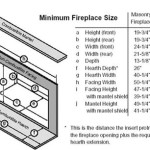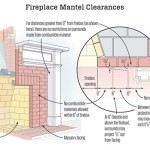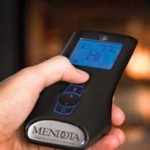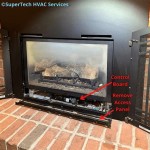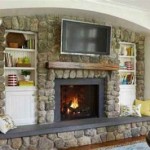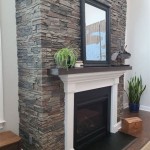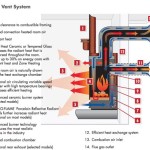Fireplace Inserts For Wood Burning: A Comprehensive Guide
Wood-burning fireplaces have historically served as a central source of heat and ambiance in homes. However, traditional open fireplaces are often inefficient, losing a significant portion of heat up the chimney. Fireplace inserts offer a solution to this inefficiency by converting existing masonry or prefabricated fireplaces into a more effective heating appliance. This article provides a comprehensive overview of wood-burning fireplace inserts, covering their functionality, benefits, types, selection criteria, installation, maintenance, and relevant safety considerations.
A fireplace insert is a self-contained firebox designed to be installed directly into an existing fireplace opening. Unlike open fireplaces, inserts are closed systems with a door, which dramatically reduces airflow up the chimney. This controlled combustion allows the fire to burn hotter and more efficiently, extracting more heat from the wood. The insert is typically encased in a steel or cast iron body, which radiates heat into the room. Most modern wood-burning inserts are equipped with a blower fan to further distribute the heat throughout the space.
The fundamental principle behind a wood-burning insert's efficiency lies in controlled combustion. Open fireplaces draw a large volume of air from the room to sustain the fire, most of which escapes up the chimney along with the heat. This creates a negative pressure in the room, causing cold air to be drawn in from outside. Fireplace inserts, on the other hand, minimize the airflow requirement, resulting in a more complete burn of the fuel and significantly less heat loss. The sealed firebox also prevents backdrafting and the release of smoke and harmful pollutants into the living space.
The installation process generally involves preparing the existing fireplace opening, connecting the insert to a designated chimney liner, and securing the insert within the firebox. Proper installation is crucial for safe and efficient operation and should always be performed by a qualified professional. A correctly sized and installed chimney liner prevents creosote buildup and ensures proper venting of combustion gases.
Enhanced Heating Efficiency
The primary advantage of a wood-burning fireplace insert is its significantly improved heating efficiency compared to traditional open fireplaces. Open fireplaces typically have an efficiency rating of 5-15%, meaning that only a small fraction of the heat generated is actually used to warm the room. The vast majority of the heat escapes up the chimney. Wood-burning inserts, in contrast, can achieve efficiency ratings of 60-80% or even higher, depending on the model and design. This translates to a substantial reduction in wood consumption and a more comfortable and consistent heat output.
The increased efficiency stems from several factors. First, the sealed firebox minimizes air leakage, ensuring that the fire burns more completely. Second, the internal design of the firebox often incorporates baffles and secondary combustion systems to burn off gases that would otherwise be lost up the chimney. These systems not only improve efficiency but also reduce emissions. Third, the use of a blower fan helps to circulate the heated air more effectively, distributing it throughout the room rather than allowing it to stratify near the ceiling. The combination of these features makes wood-burning inserts a far more effective heating appliance than open fireplaces.
Furthermore, the improved heat output of a fireplace insert can significantly reduce reliance on other heating systems, such as furnaces or electric heaters. This can lead to substantial cost savings on heating bills, particularly in colder climates. The reduced wood consumption also translates to less time and effort spent gathering or purchasing firewood.
Improved Safety and Air Quality
Beyond efficiency, wood-burning fireplace inserts offer significant improvements in safety and air quality compared to open fireplaces. Open fireplaces pose several safety risks, including the potential for backdrafting, the release of sparks and embers into the room, and the accumulation of creosote in the chimney. Backdrafting can occur when the chimney fails to draw properly, causing smoke and carbon monoxide to enter the living space. Sparks and embers can ignite nearby flammable materials, posing a fire hazard. Creosote, a highly flammable byproduct of combustion, can build up in the chimney and potentially lead to a chimney fire.
Fireplace inserts mitigate these risks through their sealed design and controlled combustion. The sealed firebox prevents backdrafting and the escape of sparks and embers. The controlled burn minimizes the production of smoke and creosote, reducing the risk of chimney fires. Many modern inserts are also equipped with catalytic or non-catalytic combustors, which further reduce emissions of harmful pollutants. These combustors burn off gases that would otherwise be released into the atmosphere, resulting in cleaner air both inside and outside the home.
The improved air quality associated with wood-burning inserts is particularly beneficial for individuals with respiratory sensitivities or allergies. Open fireplaces can release significant amounts of particulate matter and other pollutants into the air, which can exacerbate respiratory problems. Fireplace inserts, with their controlled combustion and emission reduction technologies, significantly reduce the levels of these pollutants, creating a healthier indoor environment.
Proper installation, including the use of a correctly sized chimney liner, is essential for ensuring safe and efficient operation. The chimney liner provides a dedicated pathway for the exhaust gases to escape, preventing them from leaking into the home. Regular chimney cleaning is also crucial for removing creosote buildup and preventing chimney fires. Following the manufacturer's instructions for operation and maintenance is essential for maximizing safety and performance.
Types of Wood-Burning Fireplace Inserts
Wood-burning fireplace inserts are available in various types, each with its own design features and performance characteristics. The two main types are catalytic and non-catalytic inserts. Catalytic inserts utilize a catalytic combustor, a coated ceramic honeycomb structure that helps to burn off gases and pollutants at a lower temperature. Non-catalytic inserts rely on a combination of design features, such as baffles and secondary air injection, to achieve complete combustion.
Catalytic inserts generally offer higher efficiency and lower emissions than non-catalytic inserts, but they require more maintenance. The catalytic combustor can degrade over time and needs to be replaced periodically. Non-catalytic inserts are simpler in design and require less maintenance, but their efficiency and emissions may not be as high as catalytic models. The choice between catalytic and non-catalytic insert depends on individual priorities and preferences.
In addition to catalytic and non-catalytic, there are also different styles and sizes of wood-burning inserts to match different fireplace openings and aesthetic preferences. Some inserts are designed with a traditional look, featuring ornate details and a cast iron finish. Others have a more contemporary style, with clean lines and a sleek design. The size of the insert should be carefully matched to the size of the fireplace opening and the heating requirements of the space. An oversized insert may produce too much heat, while an undersized insert may not be adequate to heat the room effectively.
The selection process involves considering the heating needs of the space, the size and style of the existing fireplace, and the desired level of efficiency and emissions. Consulting with a qualified fireplace professional is recommended to ensure proper sizing and installation. They can assess the existing fireplace and chimney, recommend appropriate insert options, and provide guidance on installation and maintenance.
The price of wood-burning fireplace inserts can vary significantly depending on the type, size, features, and brand. Catalytic inserts generally cost more than non-catalytic models, and larger inserts with more features will also be more expensive. It is important to factor in the cost of installation, including the cost of a chimney liner, when budgeting for a fireplace insert. While the initial investment may be significant, the long-term savings on heating bills and the improved safety and air quality can make a wood-burning fireplace insert a worthwhile investment.

Wood Burning Fireplace Inserts Insert Installation

Napoleon Epi3 Wood Fireplace Insert Inserts By Rockford Chimney

Why A Wood Burning Fireplace Insert Bethesda Md Service

Lopi Premium Wood Fireplace Inserts Custom Hearth Fireplaces And Stoves

T25i Timberwolf Wood Fireplace Insert Hearth Stove Patio

Ventis Hei240 Wood Burning Insert Rockford Chimney

Wood Inserts We Love Fire
.aspx?strip=all)
Cost Of Operating A Wood Insert Cord Calculator Regency

We Install Fireplaces Inserts And Stoves Top Fireplace Brands

Should I Use A Fireplace Insert Or Wood Stove To Heat Up My Home
Related Posts

